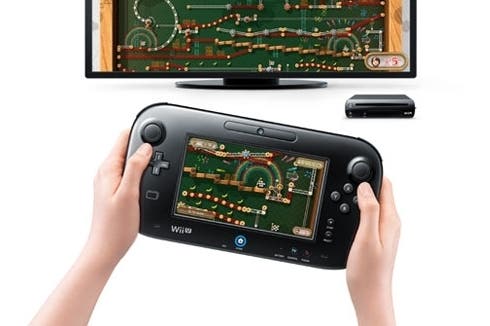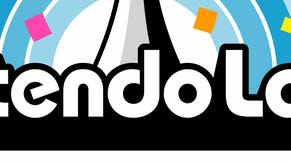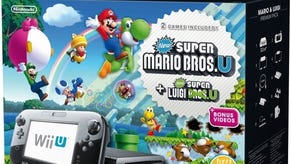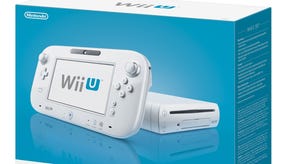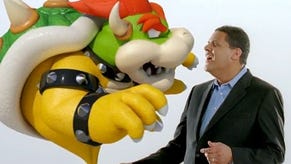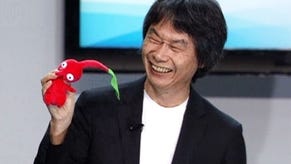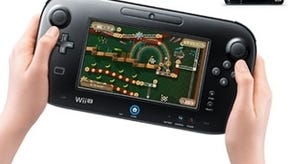Discovering the Wii U's third space
How Mario Chase reveals the magic behind Nintendo's new console.
Nothing quite beats the thrill of the first day with a console. It's a little like a first date; endless days of anticipation leading into a few hours that combine awkwardness and nervous excitement - and if the stars are aligned it's all full of the promise of years of happiness together.
Of course, some first dates go better than others, and some go horribly awry. But let's forget the bad ones with their clammy fumbling and lack of spark. In fact, let's forget this whole sticky metaphor before it leads us anywhere unsavoury, and let's instead celebrate the good console launches.
Perhaps your own favourite came at the time of the biggest generational leap we're ever likely to see, when two dimensions blossomed out into three; an afternoon stolen with the PlayStation's Ridge Racer or WipEout, or maybe a weekend spent exploring the tangible caverns of Mario 64's castle.
Or perhaps it's something a little more contemporary. My own personal darlings have all been in the last ten years: arranging a park meeting with a friend on the DS's launch and silently communicating over Pictochat, for example, or the exhilarating sensation when seeing a group of non-games players drawn together by a night of Wii Sports, and the feeling of being on the brink of a new and exciting age.

Chalk up the Wii U's launch as another happy day and another memory to savour. There's a thread there, of course, and I think it's fair to admit that Nintendo still maintains a certain magic. I also think it's fair to admit, though, that the Wii U has launched in a more demanding market than Nintendo's faced before, and certainly a more hostile one. The disquiet that murmured amongst the hardcore around the launch of the Wii and DS at certain points rose until it deafened all else out.
You can understand some of that disquiet when you consider the fact that the Wii U doesn't really seem to know what it is. I'm still not entirely sure myself either, but over the past few days that's started to matter less and less now I'm realising how much fun it all is.
It's the GamePad's screen, of course, that's the real focus of attention, and it's also what's the real source of confusion. There's no fixed purpose: it's at once a touch pad, a mini-map and an overview of an inventory, yet plenty more besides. Again I'm not entirely sure what exactly it's there for, though I'm slowly beginning to appreciate what it's not.
There's some sort of consensus that the Wii U's GamePad is a successor to the dual-screen set-up of Nintendo's most successful handheld, but I think that's a misunderstanding that somewhat overlooks the wonder of the new console.
The DS's two screens - and, by extension, those of the 3DS - are in truth a single display cut crudely in half. There's a divide, but it's only an inch-wide plastic one - the space they share is the same, even if they're often given slightly different, complimentary purposes.
The magic of the Wii U isn't in its second screen, but rather in the space between the pair. It's a space that some of the early games are beginning to explore well; in Zombi U, it becomes the threat of the shadows as you're pulled away from the game world and into your inventory, and it's a source of brilliant tension. In New Super Mario Bros. U, it's a space that can be used to help or hinder as one player places blocks down in the game world for Mario to leap on - or to halt his progress.
And it's in Nintendo Land, a mini-game collection I'd written off upon its first reveal, that that space really comes into focus - or, rather, where its potential really starts to show. Sometimes it's cute but slight: Pikmin Adventure's use of it simply makes the messy business of offline co-op that much tidier, while in the single-player pursuits there's more of a connection between the two screens.
In the competitive games, though, the space in between them becomes electrically charged - and it's responsible for one of the best few hours of gaming I've had in years. Luigi's Ghost Mansion, Animal Crossing Sweet Day and Mario Chase all elect to make it a private screen, to great effect.
Luigi's Ghost Mansion has been getting the most plaudits, and for good reason: the player with the GamePad is the invisible ghost, identified only by occasional flashes of lightning and the ever more urgent pad rumble as they get closer to other players. Sweet Day, meanwhile, is a similar game with an added element of risk and reward as you hoover up candy balls across the map while the GamePad player, in control of two guards assigned to each analogue stick, also has the mind-warping task of co-ordinating with themselves.
But it's Mario Chase that's snagged me, probably because of its relative simplicity. It's catch me if you can, quite simply - the GamePad player's afforded a view of the entire map, while those playing on the main screen have a more limited perspective and must work with their team-mates to track down and identify the runaway. And so it becomes a noisy, breathless pursuit, screaming orders at teammates while the empowered GamePad player giggles to themself.
All of a sudden, Nintendo's curious 'Talk or Fail' slogan for its recent series of ads makes sense; the Wii U, at times, brings with it all the intimacy and mischievous social deception that makes board games so great. That's not to say that the Wii U's invented competitive couch gaming, but it's certainly reinvigorated it, with that third space, that private screen, creating a tension that no other console can replicate right now.
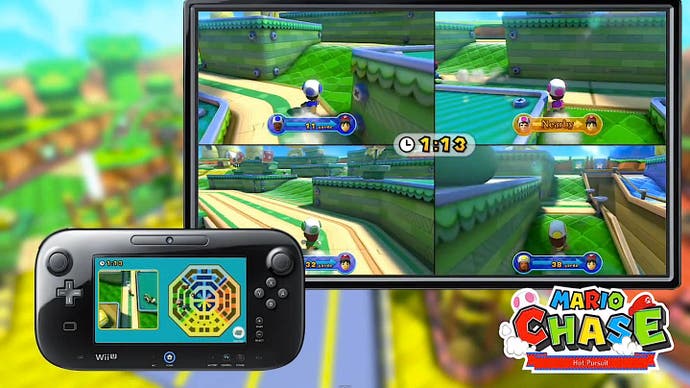
And so my first day with the Wii U ended with a few friends and a roomful of smiles. We're in our thirties, it's Saturday night and we're playing a brightly coloured variant of tag. I'd laugh, but after spending three hours straight chasing or being chased through candy-coloured mazes and screaming with glee, I don't think I've got it left in me.
At a party later that night, I was trying to explain the brilliant appeal of the Wii U to some friends who had already been won over by its predecessor. I couldn't really succeed where Nintendo's failed since the system was announced a couple of years ago, and not just because it's a little tough saying asymmetrical multiplayer after a couple of snowballs.
And so I still think Nintendo's got a bit of a challenge on its hand. First there's some of that traditional crowd - and excuse me if this seems a little mean, but the Wii U feels like an incredibly social machine, which is perhaps what's putting it out of reach for some of the more miserly old guard.
And for that broader crowd, it's tough to communicate what it is that makes that third space so enticing. It's a matter of getting the GamePad in people's hands, and proving how exciting the Wii U can really be. Since becoming a convert myself, I've been desperately recruiting people to come and sample some of the console's unique new magic.
